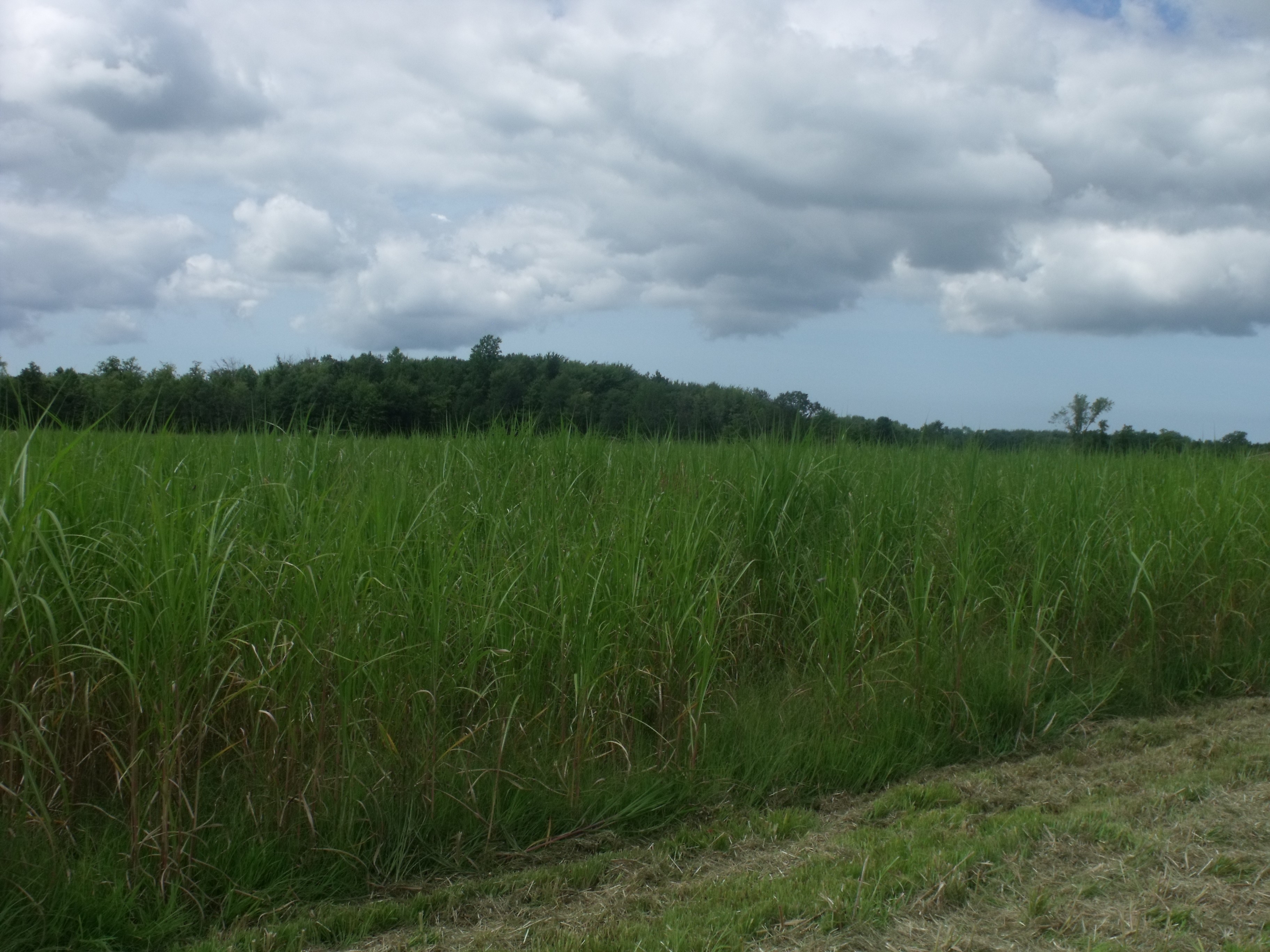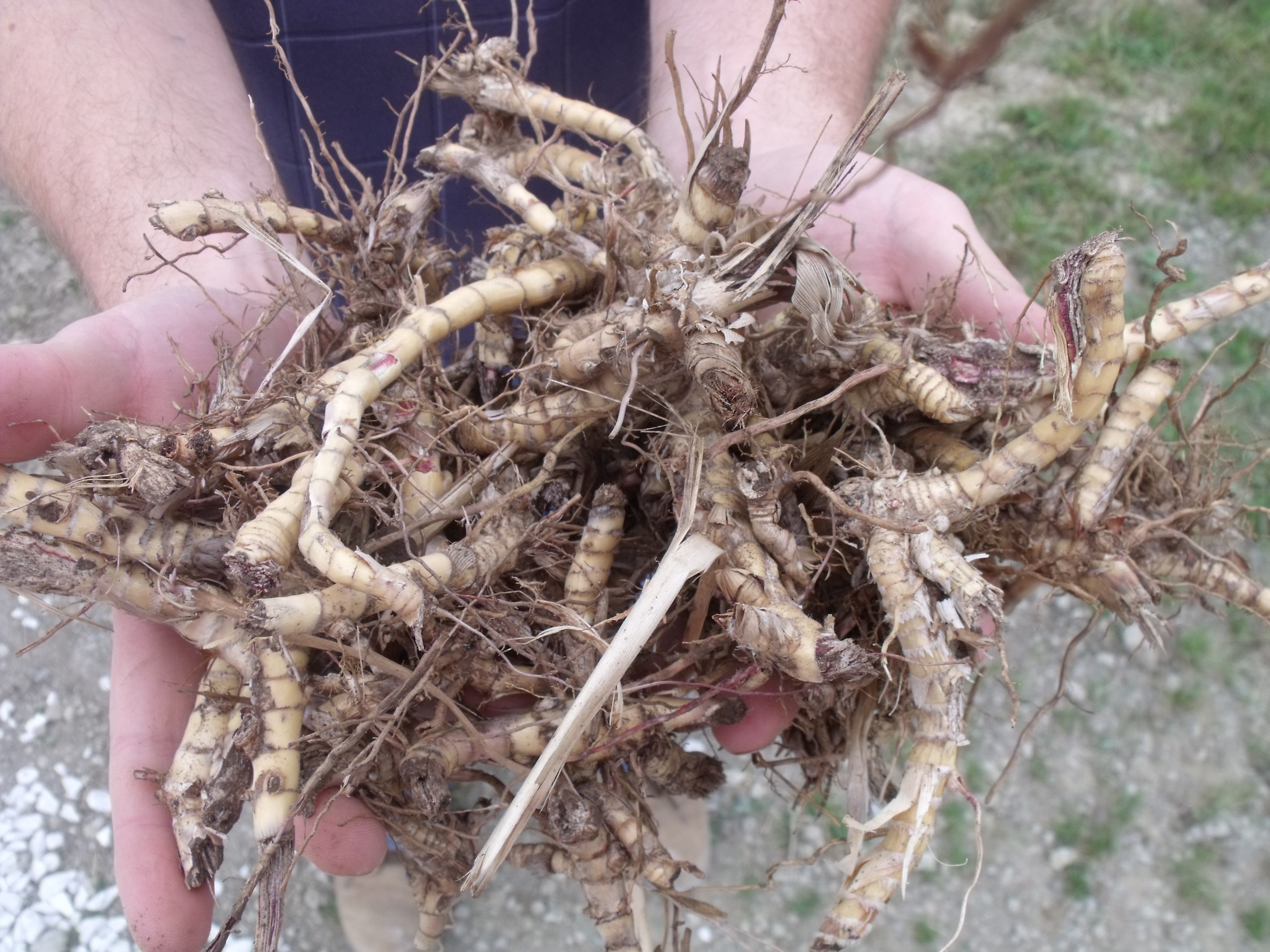Miscanthus (Miscanthus sp.)
Introduction

| Growing cycle | Grows as a perennial grass that cann be harvested once per year and regrows from rhizomes after harvest |
| Planting stock | Vegetative progagation fromm rhizomes (root growths) |
| Age at first harvest | Can be harveste as soon as the second year, a full crop can be expected by teh second or third growinng season |
| Yield per Acre | 8 to 12 tons per acre |
| Heating Value | 8,105 BTU/pound |


Species Distribution
Miscanthus is a genus which includes twelve perennial grass species that are native to Asia and were introduced to the United States as ornamental plants in the nineteenth century. This tall reed, or canelike plant, a relative to sugarcane, can withstand both cold conditions and poor soils. Its growth potential and high yield make it a prime candidate for biomass production. Giant miscanthus (Miscanthus giganteus), the species most commonly used for bioenergy, is actually a sterile hybrid of two species, Miscanthus sinensis and Miscanthus sacchariflorus. Giant miscanthus can be used directly as a feedstock for cellulosic biofuel production. It can also be pressed into pellets or biomass logs for combustion. Additionally, it has high lignocellulose yields in comparison to other biomass crops, which makes it desirable as a biomass feedstock. The plant is drought-tolerant but fares better under wetter conditions, and it is actually a good fit for soils that are too wet for other crops, such as corn or soybeans. Giant miscanthus’s roots can grow deep below the ground surface, as far as eight feet, and they break up hard soils and improve drainage. The hybridized giant miscanthus is sterile; therefore, invasiveness from seeds is not an issue. However, some other miscanthus varieties can be invasive, so it is important to ensure that the giant miscanthus species is selected when looking for planting stock
Geographic Distribution
Currently, giant miscanthus is not widely found across the United States. It has been used occasionally as an ornamental plant since the 1930s in the United States; however, it has been planted more widely in Europe. Based on how well it does in Europe (from Italy in the south to Denmark in the north), it is likely that giant miscanthus will be productive over a wide range of temperate regions including the southern U.S. It has been grown successfully in Europe at similar latitudes to the southern U.S. It does not fare well in arid climates.
The plant is drought-tolerant but fares better under wetter conditions and is actually ideal for soils that are too wet for other crops, such as corn or soybeans. Giant miscanthus’s roots can grow deep below the ground surface, reaching down to 8 feet, and they break up hard soils and improve drainage. The hybridized giant miscanthus is sterile, so there are no concerns about invasiveness from seed. However, some other varieties of miscanthus can be invasive, so it is important to ensure that the giant miscanthus species is selected when looking for planting stock.
Production Process
Giant miscanthus is grown from rhizomes (or root growths), rather then seed, and requires specialized equipment for planting them. These planting costs make it significantly more expensive to establish than other energy crops. Rhizomes can be hard to find, but are becoming more widely available. Soils should be tested prior to planting; a pH between 6 to 8 is desirable. Typically, 6,000 plants per acre are planted in the late spring once there is no chance of another frost occurring. However, it is not recommended to plant too late in the spring or early summer as establishment would be negatively affected. Weed control is essential within the first year and may be needed in the second year. Once giant miscanthus is established, stands will usually be weed-free as it crowds out all other plants in the field. Frost can kill the plants, especially in the first year; however, once a stand survives through the first winter, it will usually survive subsequent winters. Frost kill is less of a risk in the southern United States because of milder winter temperatures. Nitrogen fertilizers are not recommended as giant miscanthus has low nutrient requirements during establishment and does not show much response to nitrogen fertilization. Some studies have shown that nitrogen can be counterproductive to giant miscanthus establishment as it encourages greater weed growth.
Growth Rate
A full crop can be expected after two to three growing seasons, and the first harvest can occur as soon as the second year. Unlike during planting, no new equipment is needed to harvest giant miscanthus because conventional hay or silage equipment can be used. Giant miscanthus can be harvested annually for approximately 15 to 20 years. The plant reaches heights of up to 12 feet and can regrow from the rhizome each year. Giant miscanthus is typically harvested in the late winter or early spring to allow nutrients to move from the above ground portion of the plant, into the crown and rhizomes. These nutrients can then be used by the plant the following year.
Yield
Biomass yields for giant miscanthus average as much as 8 to 12 tons per acre per year, making it among the highest-yielding perennial energy crops. However, there is not very much published data on giant miscanthus yields that are specific to the United States. Stalks can be as long as nine feet at harvest, which makes for abundant biomass. The relationship between harvestable yields and fertilization is not clear. Productivity is typically higher on more fertile soils, but sites with poorer soils can still produce high yields if other environmental conditions, such as temperature, are favorable. Giant miscanthus will grow on marginal sites, but, as with most crops, yields will be reduced on nutrientpoor lands; however, overall production can still be considered high in comparison to other perennial grasses. Some small research trials in the Midwestern United States suggest that giant miscanthus could yield more than twice the amount of biomass as switchgrass grown in the same area.
Conclusion
Giant miscanthus has great potential in the southeastern United States as a biomass feedstock. In the South, there is little risk for frost kill, unlike in more northerly regions. Its fast growth rate and abundant biomass growth on all types of land make it a desirable bioenergy crop. There are some limitations for its establishment, such as difficulties in sourcing planting materials and significant costs for planting the rhizomes. Despite these challenges, the economic potential returns for giant miscanthus over 20 years are favorable compared to other energy crops.
Prepared By
Mike Jacobson, Leslie Boby, Bill Hubbard and Connor McDonald
Adapted From
Jacobson, M. 2013.Renewable and Alternative Energy Fact Sheet: NewBio Energy Crop Profile: Giant Miscanthus. http://extension.psu.edu/publications/ee0079/view.
Other Sources
- Jacobson, M. Harrison, D, Helsel, Z, Rak, D, Forgeng, B. and Heil, N. Miscanthus Budget for Biomass Production. http://extension.psu.edu/publications/ee0081
- Heaton, E., Boersma, N., Caveny, J., Voigt, T. and F. Dohleman. 2014. eXtension Farm Energy COP.“Miscanthus (Miscanthus x gigan- teus) for Biofuel Production. http://www.extension.org/pages/26625/miscanthus-miscanthus-x-giganteus-for-biofuel-production.
- Williams, M.J.and Douglas, J.July 2011.Planting and Managing Giant Miscanthus as a Biomass Energy Crop.USDA NRCS Plant Materials Program, Technical Note No. 4.